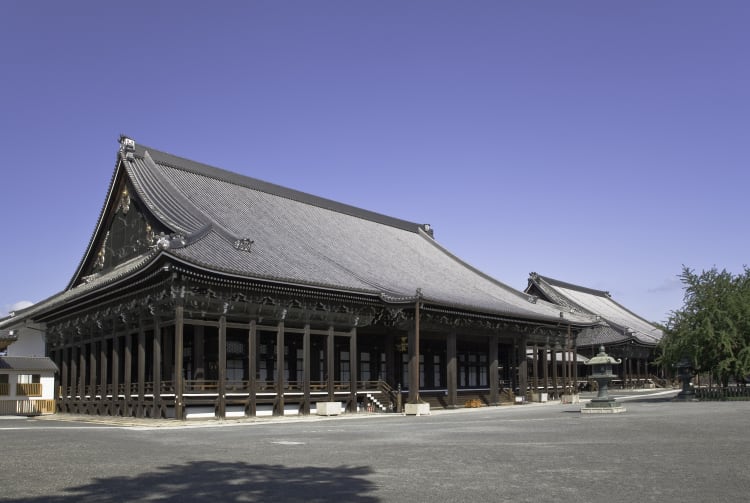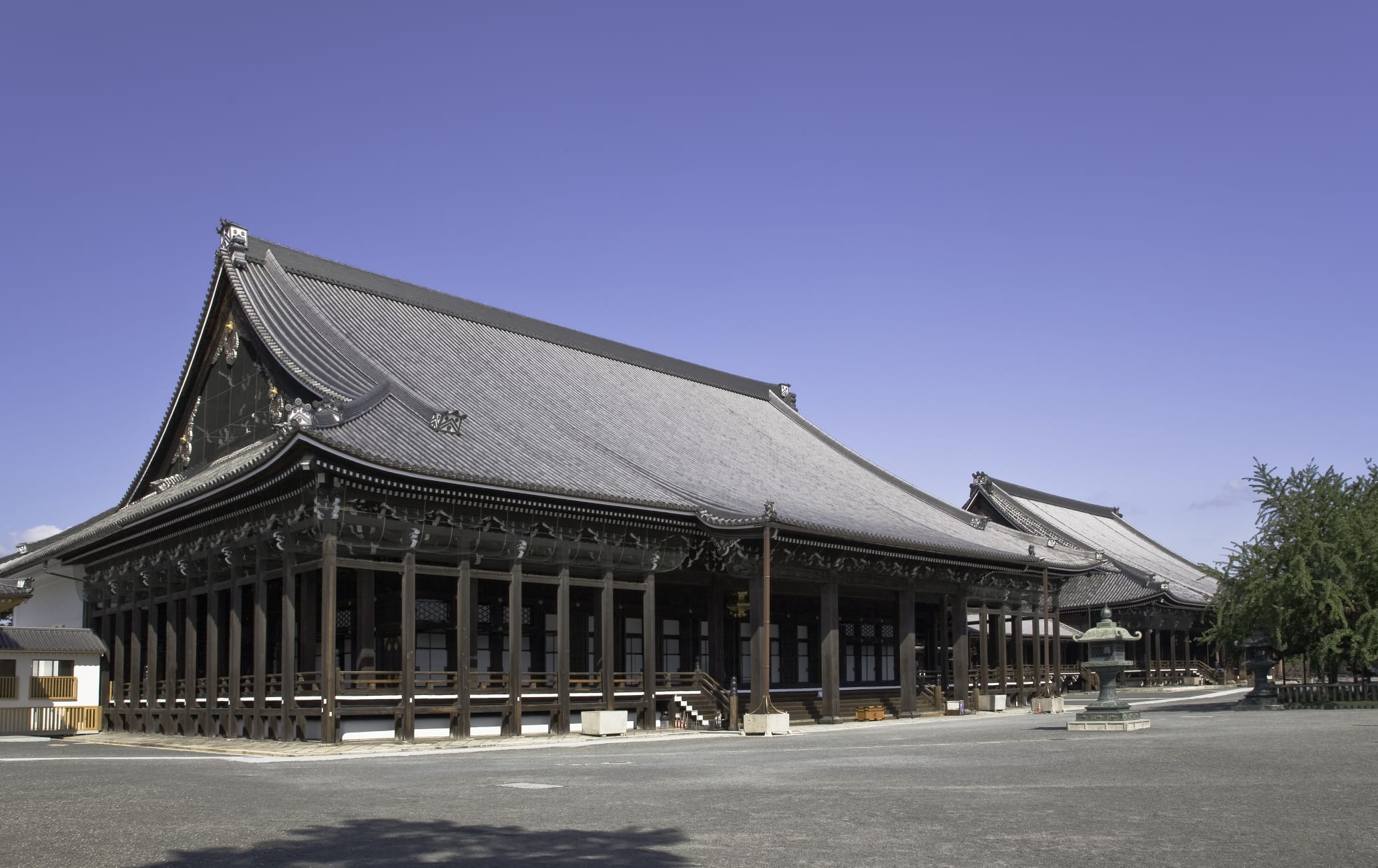A working temple in the heart of Kyoto
Nishi Honganji is a temple that continues to serve as a center of modern religious Buddhist practices. It is slightly to the west of its twin temple, Higashi Honganji .
As you might guess from their names, the two were once aligned. It is said that they were divided into west (nishi) and east (higashi) sects by Tokugawa Ieyasu, then ruler of Japan, who feared that their political power would grow too great.
How to Get There
You can walk or take a bus here.
Nishi Honganji is accessible on foot from Kyoto Station . It takes 15 minutes. A taxi will get you there in minutes.
The twin temples
The layout of the two temples is similar, but each has some defining features and points of interest. Compared to Higashi Honganji, which suffered a fire during the Edo period (1603-1867), the buildings of Nishi Honganji reflect the aesthetics of the Momoyama period (1573-1615) and Edo period. Only Nishi Honganji has been designated a UNESCO World Heritage Site.
An artistic place
Nishi Honganji contains a garden called Daishoin. Built without any water features, it instead uses sand, stones and plants to represent mountains, rivers and the sea. It is usually closed to the public. Another feature of note is the Karamon, a gate whose intricately carved and painted sloping roof dwarfs the actual entry point.

























































